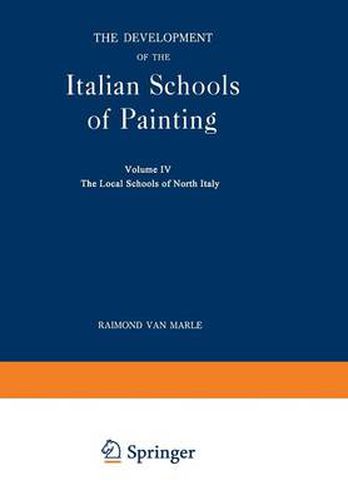Readings Newsletter
Become a Readings Member to make your shopping experience even easier.
Sign in or sign up for free!
You’re not far away from qualifying for FREE standard shipping within Australia
You’ve qualified for FREE standard shipping within Australia
The cart is loading…






This title is printed to order. This book may have been self-published. If so, we cannot guarantee the quality of the content. In the main most books will have gone through the editing process however some may not. We therefore suggest that you be aware of this before ordering this book. If in doubt check either the author or publisher’s details as we are unable to accept any returns unless they are faulty. Please contact us if you have any questions.
It is only in the last generation that lovers of art have recognized the special qualities of the 14th century Sienese school of painting, and have found its graceful, conventional drawing and its pleasing decorative effects not inferior to the realism and fidelity to nature praised in other periods. The general admiration accorded to the subtle, lyrical and aristo* cratic expression of abstract and spiritual conceptions which is the essence of Sienese painting, gives us some hope for the future develop- ment of taste in Europe and for its artistic tendencies. F. Mason Perkins was the first to understand the aesthetic signific- ance, not only of the principal artists of this school, but also of its minor members. His numerous articles on the Little Masters have been of great assistance to me in my attempt to write as complete a history as was possible of Sienese painting in the I4th century. I am only too glad to take this opportunity of paying homage to his profound knowledge and enthusiastic activity in this field of study. Other names that deserve mention here are those of Mr. Langton Douglas, the annotator of Crowe and Cavalcaselle and author of many important studies including a IIHistory of Siena ; and of Dr. G. De Nicola, Director of the National Museum, Florence, for among the many subjects with which he is conversant is the history of the Sienese school of painting, on which he has written articles of great value.
$9.00 standard shipping within Australia
FREE standard shipping within Australia for orders over $100.00
Express & International shipping calculated at checkout
This title is printed to order. This book may have been self-published. If so, we cannot guarantee the quality of the content. In the main most books will have gone through the editing process however some may not. We therefore suggest that you be aware of this before ordering this book. If in doubt check either the author or publisher’s details as we are unable to accept any returns unless they are faulty. Please contact us if you have any questions.
It is only in the last generation that lovers of art have recognized the special qualities of the 14th century Sienese school of painting, and have found its graceful, conventional drawing and its pleasing decorative effects not inferior to the realism and fidelity to nature praised in other periods. The general admiration accorded to the subtle, lyrical and aristo* cratic expression of abstract and spiritual conceptions which is the essence of Sienese painting, gives us some hope for the future develop- ment of taste in Europe and for its artistic tendencies. F. Mason Perkins was the first to understand the aesthetic signific- ance, not only of the principal artists of this school, but also of its minor members. His numerous articles on the Little Masters have been of great assistance to me in my attempt to write as complete a history as was possible of Sienese painting in the I4th century. I am only too glad to take this opportunity of paying homage to his profound knowledge and enthusiastic activity in this field of study. Other names that deserve mention here are those of Mr. Langton Douglas, the annotator of Crowe and Cavalcaselle and author of many important studies including a IIHistory of Siena ; and of Dr. G. De Nicola, Director of the National Museum, Florence, for among the many subjects with which he is conversant is the history of the Sienese school of painting, on which he has written articles of great value.